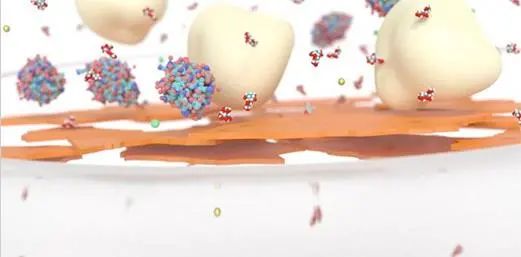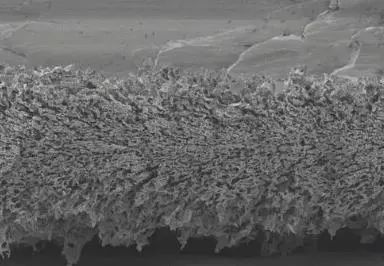In the past few years, graphene oxide membranes have been mainly used for seawater desalination and dye separation. However, membranes have a wide range of applications, such as the food industry.
A research team from the Global Aquatic Innovation Center of Shinshu University has studied the application of graphene oxide membranes in milk. This kind of membrane usually forms a dense dirt layer (carbon, “Graphene oxide membranes for lactose-free milk” on polymer membranes. ) .
Close the graphene oxide membrane permeated by lactose and water; leave fats, proteins and macromolecules in the milk.
Graphene oxide membranes have the advantage of producing porous fouling layers, so their filtration performance can be better maintained than commercial polymer membranes. The unique chemistry and layered structure of the graphene oxide membrane allow to enhance the penetration of lactose and water, while repelling fat, protein and some minerals. Therefore, the texture, flavor and nutritional value of milk can be better preserved compared with commercial polymer films.
Due to the unique layered structure of the porous fouling layer and graphene oxide membrane, the concentration of lactose and lactose permeation flux is much higher than that of commercial nanofiltration membranes. By using a support membrane with a pore size of 1 μm as the graphene oxide membrane, irreversible contamination is improved. This leads to the formation of a porous fouling layer, which enables a higher recovery rate of water flux after the milk is filtered.
Highlighting its excellent antifouling performance and high selectivity to lactose, this pioneering work demonstrates the application of graphene oxide membranes in the food industry, especially the dairy industry. This method retains the great potential of removing sugar from beverages, while retaining other ingredients, thus increasing their nutritional value.
The high antifouling properties of organic-rich solutions (such as milk) make it also an ideal choice for other applications (such as wastewater treatment and medical applications). The group plans to continue to explore the application of graphene oxide film.
This work is based on the group’s previous research results, namely the creation of sprayed graphene oxide membranes (“Effective NaCl and dye rejection of hybrid graphene oxide/graphene layered membranes”) for seawater desalination in natural nanotechnology. The membrane shows enhanced chemical stability by adding few layers of graphene, while exhibiting stable filtration performance after five days of operation. In addition, the spray deposition method is very promising in terms of scalability.
Highlighting its excellent antifouling performance and high selectivity to lactose, this pioneering work demonstrates the application of graphene oxide membranes in the food industry, especially the dairy industry. This method retains the great potential of removing sugar from beverages, while retaining other ingredients, thus increasing their nutritional value.
The high antifouling properties of organic-rich solutions (such as milk) make it also an ideal choice for other applications (such as wastewater treatment and medical applications). The group plans to continue to explore the application of graphene oxide film.
This work is based on the group’s previous research results, namely the creation of sprayed graphene oxide membranes (“Effective NaCl and dye rejection of hybrid graphene oxide/graphene layered membranes”) for seawater desalination in natural nanotechnology. The membrane shows enhanced chemical stability by adding few layers of graphene, while exhibiting stable filtration performance after five days of operation. In addition, the spray deposition method is very promising in terms of scalability.
Post time: Jul-20-2021



